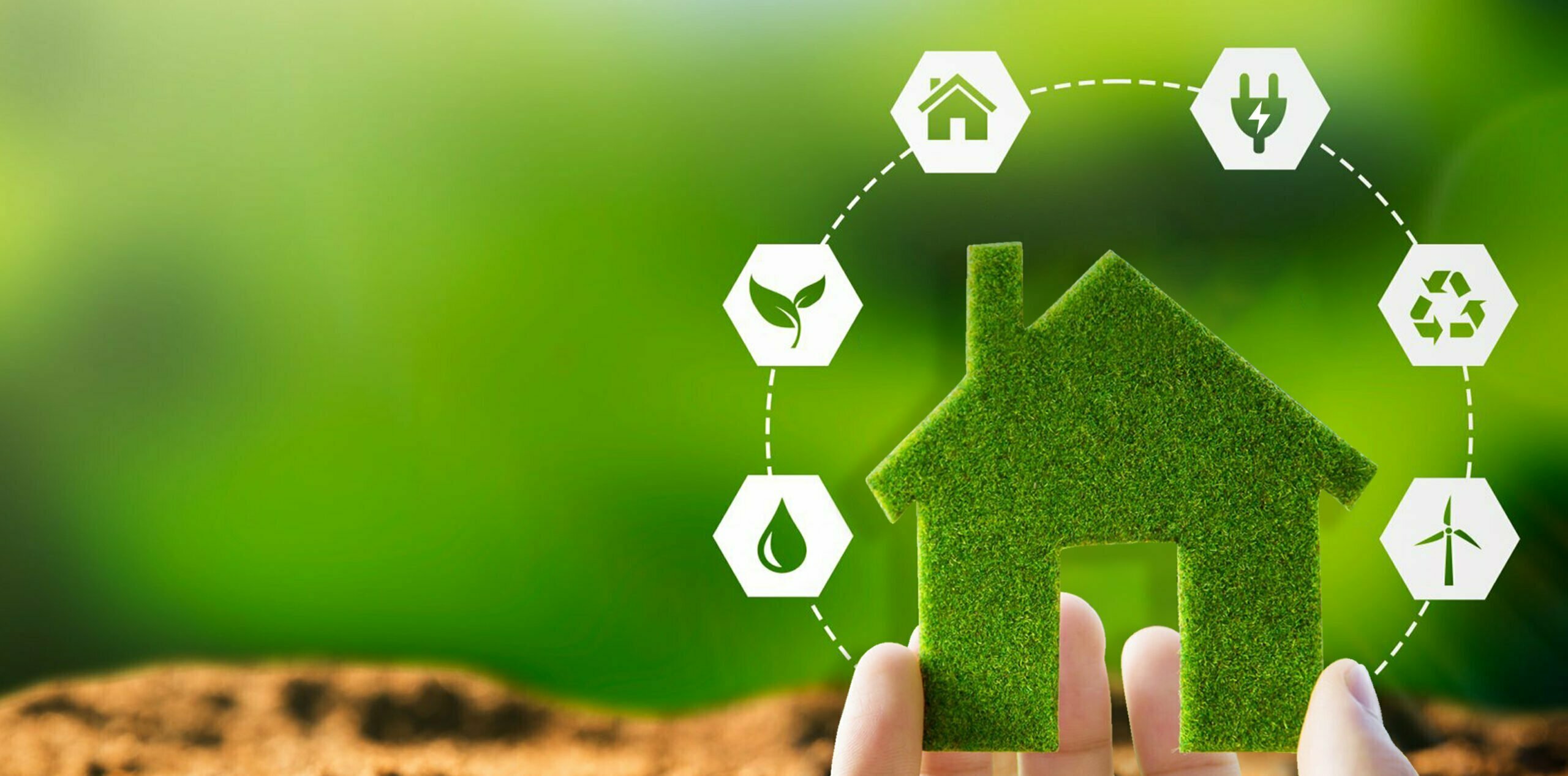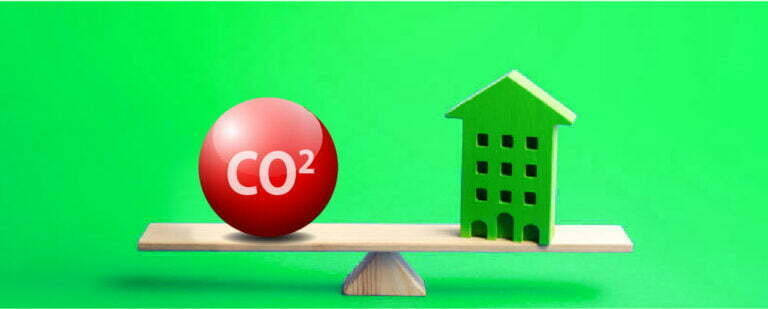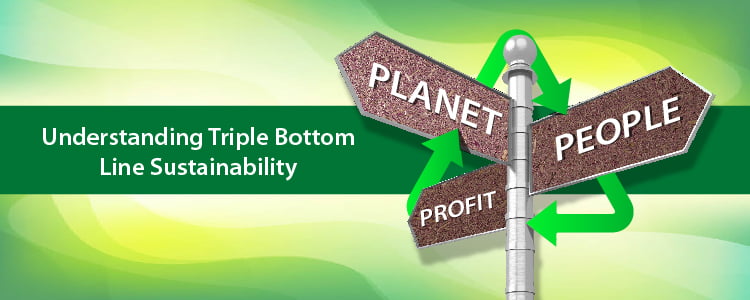The threat
To fight against climate change, builders, planners, designers, and architects urgently need to shift gears and implement sustainable designs and practices. Buildings, be it residential or commercial, are an alarmingly dominant source of almost 40% of all greenhouse gas emissions (GHGs), according to Architecture 2030, a prominent non-profit research organization in the US. Add the other infrastructure and activities, such as transportation, associated with buildings, and this number spikes. The United Nations has called for countries to achieve net-zero by 2050. In other words, any emissions in the air would need to be balanced by removing CO2.
The solution to fight against climate change –
design and build Green!
In light of the grave threat to the environment and subsequently to all forms of life on this planet, building green then becomes critical to our very existence, health, and well-being. Green buildings are about straddling the structure’s entire ecosystem – planning, design, construction, operations, and its end-of-life impact on the environment. This entails looking at options that save energy and water, do not emit harmful GHGs, and are recyclable or sustainable. When a structure does all of this while also retaining the creation of vegetated land areas, it reduces GHGs and thus aids in the fight against climate change. By incorporating all the above elements, you contribute to the UN 17-point charter on Sustainable Development Goals (SDGs) across many parameters which we will see in this article.
The SDGs issued in 2015 are a universal call to action to end poverty, protect the planet, and ensure that by 2030 all people enjoy peace and prosperity. Remember everything is interconnected and interdependent.
Best practices to go Green
Let us now look at elements to be considered as one adopts the Green building route.
- Energy requirements- depending on the construction and its need, consider solar, wind, and biogas as alternatives to fossil fuels. Solar is the best option for commercial and residential buildings. Solar energy doesn’t emit hazardous pollutants or greenhouse gases like carbon dioxide into the air or water supplies. Coal and natural gas are examples of fossil fuels that pollute.
- A shift from traditional engineered panels or wood as the choice of construction material is a good practice to adopt. The former emits high VOC emissions, and the latter pushes deforestation to new levels. Look at sustainable options made out of naturally renewable fiber, such as Agribiopanels, coco panels, hemp blocks, or Agrocrete made of agro-waste. They not only recycle Agri waste but provide a healthier environment to live in and are environmentally sustainable as they do not add to landfills or pollution. Remember to be mindful of the impact of each element in the design on the environment.
- Source materials close to home. One needs to consider not only the material but also its source. Lesser transport to and from the construction site cuts associated fuel consumption and emission of GHGs.
- Other green systems to incorporate in building engineering are radiant floors, grey water recycling, rainwater harvesting, geothermal systems, and energy-efficient window systems. These systems work together to help meet the energy and water-saving goals while lowering the utility bills. These measures help reduce the carbon footprint of buildings and are more energy-efficient.
- Retrofitting is another method to deploy to improve energy efficiency. It involves making changes to existing commercial buildings and aids operational optimization, IoT connectivity, onsite solar or renewable energy, and utilizing existing landscaping elements such as shade. In many cases, renovating an old building may be less expensive than constructing a new one from scratch.
Role of Smart Cities
The government of India, to combat environmental damage without slowing the pace of urbanization, has introduced the concept of “Smart Cities”.
Smart cities employ numerous sustainability tactics, ranging from greener commercial buildings to electrifying public transit and using the Internet of Things (IoT) to connect and better understand the significant contributors to carbon emissions. With IoT technology becoming increasingly ubiquitous, there are numerous chances to “green” existing and new buildings.
Green buildings and SDGs norms
Let’s see how Green buildings fulfill other SDGs norms.
- We have now already We have already seen that green building characteristics, such as increased lighting, better air quality, and greenery, have a favourable impact on our health and wellness. Moreover, as the global demand for green building grows, so will the workforce that will be required to deliver them. Countless people are impacted throughout a green building’s lifecycle, which includes conception, design, construction, operation, and even refurbishment, increasing the probability of inclusive employment.
- Green buildings are not only about the present but more importantly about the future. Ensuring structures are adaptable, resilient, sustainable, and last in the face of global climate change gives a major fillip to innovation and technology.
- The construction industry can help prevent waste by reducing, recycling, and reusing circular economy principles that ensure resources are not wasted.
- Collective efforts and Collaboration achieve impact. In 2015, a significant milestone was achieved when World Green Building Council, UNEP, the French government, and Several other organisations collaborated to hold the first-ever “Buildings Day” as part of the official COP21 agenda, as well as to form the Global Alliance for Building and Construction.
High-performing green buildings, particularly LEED (Leadership in Energy and Environmental Design) certified facilities, provide the means to reduce the climate impact of buildings and their inhabitants. A classic example is the Puma store in Bangalore – the first LEED-rated showroom of PUMA worldwide. The sustainable features of the store include recycled steel from old DVD players, bicycles, and tiffin boxes! Its roof garden keeps the building insulated and cooler, and its energy-efficient artificial lighting ensures fewer watts usage. The highly insulated building shell allows for cooling without the use of an air conditioner. The underfloor air distribution helps to save energy. This approach works on the premise that in any particular space air should be cooled only for the first eight feet from the floor. The reason for this is that currents cause hot air to rise automatically while cool air remains at the bottom.
The Indian School of Business, Hyderabad is yet another example. The facility uses a concrete mix design for structural strengths, which minimizes shuttering stripping time. The Porotherm hollow clay bricks reduce the dead load, allowing cost-effective use of Fe500 grade steel reinforcement. These Porotherm bricks, while not lacking in any characteristics are at least 60% lighter than the ordinary bricks that are normally used in construction. A considerable amount of dead-load is thus taken off the structure.
The usage of Porotherm bricks has a lot many other advantages in construction – it is economical on the pocket, due to less usage of steel and other building materials. They are easy to install, are non-toxic as they are made up of natural ingredients like rice husk ash, coal ash saw dust, etc., use less water, and are durable enough to withstand extreme temperatures! Porotherm bricks are designed to have high compressive strength and are approved as 100% eco-friendly by GRIHA (Green Rating for Integrated Habitat Assessment) and IGBC (Indian Green Building Council).
A project that pushes the boundaries of design and technology is Barangaroo in Sydney. Australia aims to be the world’s first carbon-neutral zone, with initiatives like growing 100 percent of native plants in Barangaroo Reserve, flushing bathrooms with recycled water, and eliminating construction waste to landfills by 97 percent.
Environmental sustainability has evolved into a commercial imperative rather than a choice.
From one of the world’s tallest timber buildings in Sweden to a bamboo school in Indonesia and an eco-tourism initiative to restore a national park in Rwanda, the world is moving toward a healthier and safer environment for future generations.
Green buildings are growing in popularity and importance. Using sustainable material improves your LEED and GRIHA ratings under the Green Building rating system.
As the pressure to halt and reverse climate change increases, more people seek environments that are good for them and the environment. Green buildings are the future.




